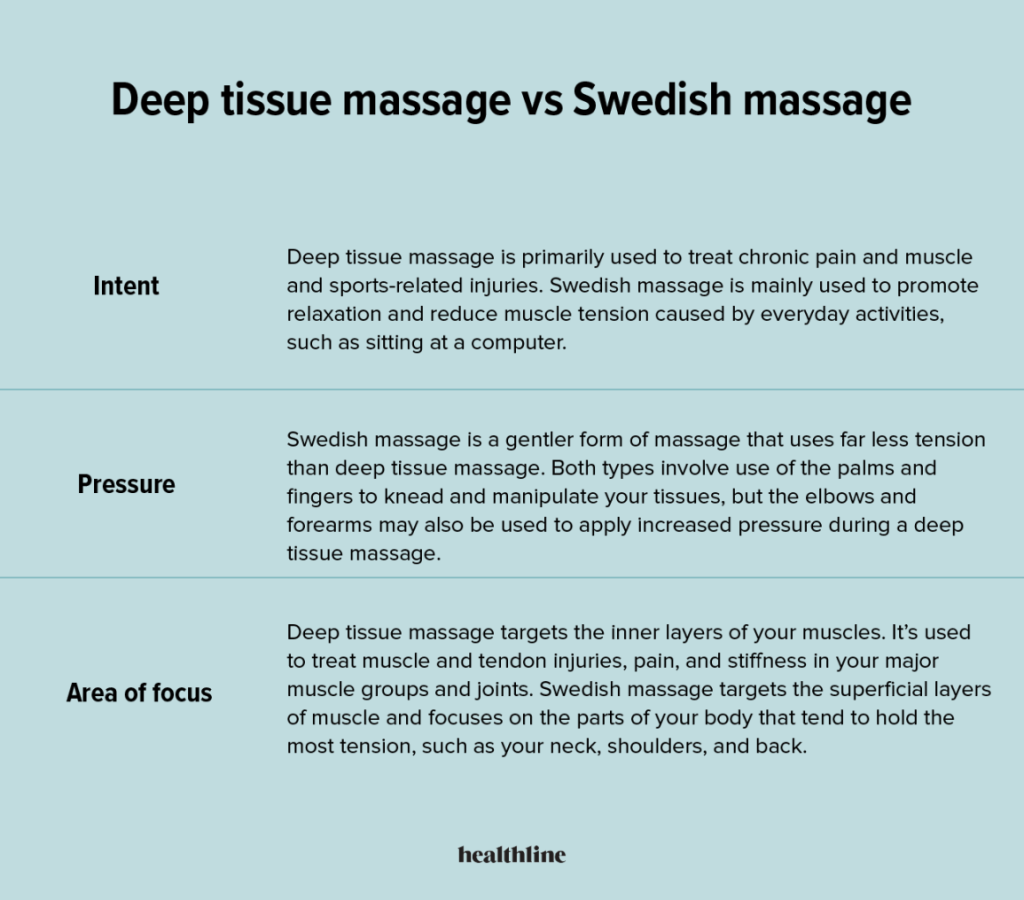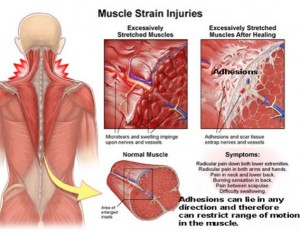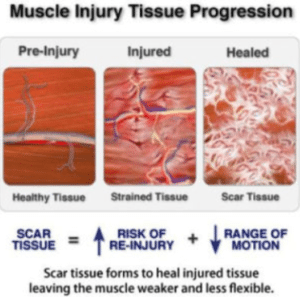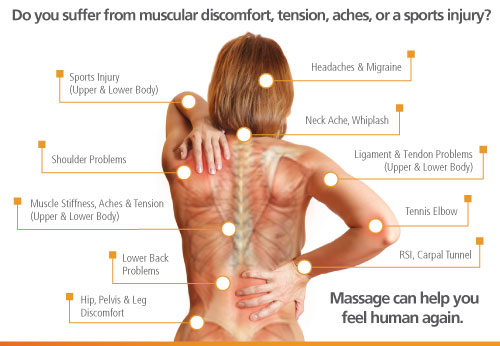Imagine lying on a comfortable massage table, surrounded by soothing music and the scent of essential oils. As the skilled hands of a massage therapist work their way over your muscles, you may feel a sense of relief and relaxation. But what exactly is happening to your body during a deep tissue massage? This type of massage therapy focuses on releasing tension and targeting deeper layers of muscles and connective tissues. In this article, we will explore the amazing benefits and effects that a deep tissue massage can have on your body, leaving you feeling rejuvenated and revitalized.

This image is property of i0.wp.com.
Muscle Relaxation
Increase in Blood Flow
During a deep tissue massage, your muscles are gently manipulated, leading to an increase in blood flow to the area. The pressure applied by the massage therapist helps dilate the blood vessels, allowing more oxygen and nutrients to reach the muscle tissues. This increased blood flow not only promotes the healing of any damaged tissues but also provides a relaxing and soothing sensation throughout your body.
Release of Tension
One of the significant benefits of a deep tissue massage is the release of tension in your muscles. Your massage therapist will use various techniques to target and alleviate specific areas of tension. As the therapist applies pressure and kneads your muscles, the accumulated tension is gradually released, allowing your muscles to relax. This release of tension can provide a sense of relief and comfort, leaving you feeling more at ease and relaxed.
Reduction in Muscle Spasms
Muscle spasms can be painful and can restrict your range of motion. However, a deep tissue massage can help alleviate these spasms. By targeting the affected muscles and applying focused pressure, the massage therapist can help relax the muscle fibers, reducing the occurrence and severity of muscle spasms. This reduction in muscle spasms allows for improved movement and flexibility, enhancing your overall comfort and well-being.
Improved Range of Motion
Another significant benefit of deep tissue massage is the improvement in your range of motion. Over time, muscles can become tight and stiff, limiting your ability to move freely. However, through the techniques used in a deep tissue massage, your muscles can be stretched and elongated, leading to increased flexibility and mobility. By addressing any restrictions in movement, a deep tissue massage can help you regain and enhance your range of motion, making daily activities and physical performance easier and more enjoyable.
Pain Relief
Release of Knots and Trigger Points
Deep tissue massage is highly effective in releasing knots and trigger points, which are areas of tightness and discomfort within the muscles. These knots and trigger points can cause pain and discomfort, which can be relieved through the application of consistent pressure during the massage. The skilled massage therapist will locate these knots and trigger points, using specific techniques to gradually release the tension and alleviate the associated pain. By addressing these areas of discomfort, deep tissue massage can provide significant pain relief and help restore your overall well-being.
Decreased Sensitivity in Pain Receptors
When you experience pain, it is because your pain receptors are sending signals to your brain. Deep tissue massage can help reduce the sensitivity of these pain receptors, thereby decreasing your overall perception of pain. The targeted pressure applied during the massage stimulates the production of endorphins, which are natural pain-relieving chemicals produced by the body. These endorphins not only help reduce pain but also create a sense of well-being and relaxation. The decreased sensitivity in pain receptors allows you to experience relief from both acute and chronic pain, improving your quality of life.
Reduction in both Acute and Chronic Pain
Whether you are dealing with acute or chronic pain, deep tissue massage can provide relief. Acute pain often occurs as a result of injury or trauma, while chronic pain is persistent and can be caused by conditions such as arthritis or fibromyalgia. The focused pressure applied during a deep tissue massage helps to relax tight muscles and reduce inflammation, easing the pain associated with these conditions. By targeting the underlying causes of pain, deep tissue massage offers a natural and holistic approach to pain management, allowing you to find relief and improve your daily life.

This image is property of www.thehubnewmills.co.uk.
Improved Circulation
Dilation of Blood Vessels
One of the many benefits of deep tissue massage is the dilation of blood vessels. The pressure applied during the massage helps to widen and open up the blood vessels, allowing for better circulation throughout your body. This improved circulation ensures that oxygen and nutrients are delivered more efficiently to your muscles, enhancing their overall health and function. Additionally, the expanded blood vessels help remove metabolic waste products more effectively, promoting a healthier internal environment.
Increased Oxygen and Nutrient Delivery
As the blood vessels dilate during a deep tissue massage, more oxygen and nutrients are transported to your muscles. This increased delivery of oxygen and nutrients is crucial for the regeneration and repair of damaged tissues. Muscles that receive an ample supply of oxygen and nutrients are healthier and more resilient, making them less prone to injury. Whether you are an athlete looking to enhance your performance or simply seeking improved overall well-being, the increased oxygen and nutrient delivery resulting from deep tissue massage can benefit you.
Enhanced Removal of Toxins and Waste
Not only does deep tissue massage promote the delivery of oxygen and nutrients, but it also aids in the removal of toxins and waste products from your muscles. The pressure applied during the massage helps stimulate the lymphatic system, a network of vessels responsible for the removal of toxins and waste from the body. By assisting in the elimination of these harmful substances, deep tissue massage supports your body’s natural detoxification processes, leaving you feeling rejuvenated and revitalized.
Breakdown of Scar Tissue
Improved Healing of Scarred Muscles
When your muscles are injured or damaged, scar tissue can form as part of the healing process. However, excessive scar tissue can lead to stiffness, reduced flexibility, and muscle imbalances. Deep tissue massage can help break down this scar tissue, facilitating the healing process and promoting the restoration of healthy muscle tissue. By addressing the scar tissue, a deep tissue massage can enhance the healing of scarred muscles, minimizing discomfort and improving mobility.
Reduction of Fibrous Tissue Adhesions
Deep tissue massage can also reduce fibrous tissue adhesions, which are areas where scar tissue binds muscles and surrounding tissues together. These adhesions can cause pain, restrict movement, and impair muscle function. Through targeted pressure and manipulation techniques, a deep tissue massage can gradually break down these adhesions, allowing the muscles and tissues to move freely again. As a result, you will experience increased flexibility, improved range of motion, and reduced discomfort, leading to a better quality of life.
Enhanced Flexibility at the Affected Area
Scar tissue and fibrous tissue adhesions can significantly limit your flexibility and range of motion. Deep tissue massage plays a crucial role in enhancing flexibility at the affected area. The expert application of pressure and stretching techniques helps loosen and lengthen the muscles and connective tissues, gradually increasing your flexibility. By breaking down scar tissue, reducing adhesions, and improving the pliability of the tissues, a deep tissue massage promotes greater freedom of movement and improved flexibility, allowing you to engage in activities you may have previously avoided due to discomfort or limited mobility.

This image is property of www.laorthopedicsportsmassage.com.
Stress Reduction
Lowered Levels of Stress Hormones
Stress can have a detrimental impact on both your physical and mental well-being. Deep tissue massage can help lower the levels of stress hormones, such as cortisol, in your body. The steady and rhythmic pressure applied during the massage triggers the release of serotonin, a neurotransmitter known for its mood-enhancing and stress-reducing properties. Additionally, the relaxation experienced during a deep tissue massage helps activate the parasympathetic nervous system, which further counteracts the effects of stress and promotes a greater sense of calm and tranquility.
Increased Release of Endorphins
Endorphins, also known as “feel-good” hormones, are naturally produced by the body during periods of relaxation and pleasure. Deep tissue massage can stimulate the release of endorphins, resulting in an increased sense of well-being and happiness. The gentle pressure and deliberate strokes employed during the massage activate the body’s natural pain-relieving mechanisms, promoting a state of relaxation and general contentment. By encouraging the release of endorphins, deep tissue massage can alleviate stress, reduce anxiety, and promote emotional well-being.
Promoted Feelings of Relaxation and Well-being
A deep tissue massage offers not only physical benefits but also emotional and psychological advantages. The combination of manipulative techniques, slow strokes, and focused attention creates an environment of deep relaxation and tranquility. As the tension melts away, you will feel a sense of calmness washing over you, accompanied by a heightened awareness of your body and mind. The resulting feelings of relaxation and well-being can help relieve symptoms of anxiety and depression, improve your mood, and promote a more positive outlook on life.
Normalization of Blood Pressure
Decreased Sympathetic Nervous System Activity
The sympathetic nervous system is responsible for triggering the body’s “fight-or-flight” response, which can lead to increased heart rate and elevated blood pressure. Deep tissue massage can help decrease the activity of the sympathetic nervous system, allowing your body to shift into a more relaxed state. The sustained pressure applied during the massage stimulates the production of chemicals that counteract the effects of stress, helping to regulate heart rate and lower blood pressure. By bringing your body back into a state of equilibrium, deep tissue massage supports the normalization of blood pressure levels.
Lowered Heart Rate
During a deep tissue massage, your heart rate tends to decrease as a result of the relaxation induced by the therapist’s techniques. The gentle pressure and slow strokes utilized during the massage activate the parasympathetic nervous system, which is responsible for the body’s rest and digest response. This activation leads to a reduction in heart rate, allowing your body to enter a more relaxed state. By lowering your heart rate, deep tissue massage promotes a sense of calmness and relaxation, helping to counteract the negative effects of chronic stress on your cardiovascular system.
Regulation of Blood Pressure Levels
High blood pressure, or hypertension, can increase the risk of various health problems, including heart disease and stroke. Deep tissue massage can play a role in regulating blood pressure levels. The combination of decreased sympathetic nervous system activity, lowered heart rate, and reduced stress hormone levels helps promote a healthy cardiovascular system. By regularly engaging in deep tissue massage, you can help maintain optimal blood pressure levels, supporting your overall cardiovascular health and reducing the risk of potentially serious conditions.

This image is property of stfrancisbaymassage.co.za.
Improved Posture
Release of Muscular Imbalances
Poor posture can lead to a multitude of problems, including muscle tension, pain, and reduced mobility. Deep tissue massage can help release muscular imbalances that contribute to poor posture. By targeting specific muscle groups and applying pressure, a massage therapist can help lengthen and stretch muscles that have become tight and shortened due to incorrect posture. The release of these muscular imbalances allows for improved alignment and reduces strain on the skeletal system, resulting in improved posture over time.
Relaxed Tense Muscles
Muscle tension is often a significant contributor to poor posture. Deep tissue massage focuses on releasing tension and tightness in the muscles. The therapist will utilize techniques that apply steady pressure to the affected muscles, encouraging them to relax and let go of any built-up tension. Relaxed muscles are more flexible and supple, enabling them to support the body in a more natural and balanced way. Through the relaxation of tense muscles, deep tissue massage can help correct postural imbalances and improve overall posture.
Enhanced Alignment of the Spine
A well-aligned spine is crucial for maintaining good posture and overall musculoskeletal health. Deep tissue massage can contribute to the enhanced alignment of the spine by addressing the muscles and connective tissues surrounding it. The pressure and manipulation techniques used during the massage help release tension and tightness in these structures, promoting proper alignment and balance. By improving the alignment of your spine, deep tissue massage can relieve strain on the surrounding muscles and ligaments, allowing for better posture and reducing the risk of pain and injury.
Reduced Inflammation
Stimulation of Lymphatic System
Deep tissue massage stimulates the lymphatic system, which plays a key role in the body’s immune response and the removal of waste and toxins. The pressure and movement applied during the massage help mobilize lymphatic fluid, increasing its flow throughout the body. This enhanced lymphatic circulation supports the removal of inflammatory substances from the tissues, reducing localized inflammation and promoting a healthier internal environment. By reducing inflammation, deep tissue massage can alleviate discomfort and enhance the body’s natural healing processes.
Decreased Swelling
Swelling is often a result of inflammation and can cause discomfort and limited mobility. Deep tissue massage can help decrease swelling by improving lymphatic circulation and reducing inflammation. The targeted pressure applied during the massage stimulates the lymphatic vessels, enabling them to transport excess fluid away from the affected area more efficiently. As a result, swelling is reduced, allowing for improved movement and a reduction in discomfort. Whether you are dealing with swelling due to an injury or a chronic condition, deep tissue massage can provide relief and promote quicker recovery.
Alleviation of Inflammatory Conditions
Inflammatory conditions such as arthritis and tendonitis can be both painful and debilitating. Deep tissue massage can offer relief from these conditions by reducing inflammation throughout the body. The pressure exerted during the massage triggers a cascade of biochemical reactions that help decrease the levels of inflammatory markers in the body. By targeting the underlying inflammation, deep tissue massage can alleviate pain, reduce swelling, and improve overall function. Whether you are seeking relief from specific inflammatory conditions or simply looking to optimize your overall health, deep tissue massage can be an effective therapy to consider.

This image is property of www.avalleyofvitality.com.
Better Sleep Patterns
Increased Production of Serotonin and Melatonin
Serotonin and melatonin are neurotransmitters involved in regulating sleep-wake cycles and promoting restful sleep. Deep tissue massage can increase the production of these neurotransmitters, leading to improved sleep patterns. The pressure and manipulation applied during the massage stimulate the release of serotonin, which helps regulate mood and promote relaxation. This heightened state of relaxation, combined with the decrease in stress hormones, facilitates the subsequent production of melatonin, which helps initiate and maintain deep sleep. By increasing the production of serotonin and melatonin, deep tissue massage can contribute to better sleep quality and duration.
Promotion of Relaxation
Relaxation is essential for a good night’s sleep. Deep tissue massage creates a sense of deep relaxation throughout your body, helping to prepare your mind and body for rest. The slow, deliberate strokes and gentle pressure employed during the massage activate the parasympathetic nervous system, which promotes a state of calmness and relaxation. This relaxation response helps to quiet a racing mind, release built-up tension, and induce a feeling of overall tranquility. By promoting relaxation, deep tissue massage can improve your sleep patterns, allowing you to wake up feeling refreshed and rejuvenated.
Improved Sleep Quality and Duration
The combined effects of increased serotonin and melatonin production and the promotion of relaxation contribute to improved sleep quality and duration. Deep tissue massage helps you achieve a state of deep relaxation, which can result in falling asleep more easily and staying asleep for longer periods. The reduction in pain, stress, and muscle tension facilitated by the massage allows you to enjoy a more restful and undisturbed sleep. By incorporating deep tissue massage into your routine, you can experience significant improvements in your sleep patterns and wake up feeling more refreshed and energized.
Emotional Release
Release of Emotional Stress
Emotions can become stored within the body, leading to physical and mental tension. Deep tissue massage provides an opportunity for emotional release, as the combination of pressure, touch, and relaxation can help release pent-up emotions. The slow, deliberate strokes used during the massage help stimulate the body’s relaxation response, allowing emotions to surface and be released. This emotional release can lead to a sense of lightness and relief, helping you let go of accumulated stress and tension both physically and emotionally.
Relaxation of Body and Mind
Deep tissue massage offers a profound relaxation experience for both the body and mind. The deliberate pressure and manipulation techniques applied during the massage activate the body’s relaxation response, signaling the mind to shift into a state of calmness and tranquility. As the body relaxes, the mind follows suit, allowing you to experience a sense of deep peace and harmony. The relaxation of both body and mind creates an opportunity for profound healing and rejuvenation, fostering overall well-being and a greater connection to yourself.
Cathartic and Therapeutic Experience
A deep tissue massage can be a cathartic and therapeutic experience, providing an outlet for emotional expression and release. The supportive space created by the skilled massage therapist allows you to feel safe and nurtured, encouraging you to let go of emotional burdens that may have been weighing you down. As the massage progresses, you may experience waves of emotion or even tears, which are all normal and part of the healing process. This cathartic and therapeutic experience can bring about a sense of emotional clarity, renewal, and a greater sense of self-awareness.
In conclusion, a deep tissue massage offers numerous benefits for your body, mind, and overall well-being. From muscle relaxation to pain relief, improved circulation to the breakdown of scar tissue, stress reduction to improved sleep patterns, deep tissue massage provides a holistic approach to wellness. By addressing both physical and emotional aspects, deep tissue massage can serve as a powerful tool in enhancing your quality of life and fostering a greater sense of balance, relaxation, and vitality. So treat yourself to a deep tissue massage and experience the transformative effects it can have on your body and mind.
